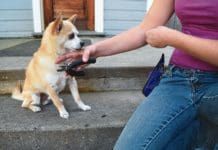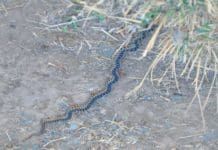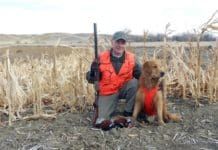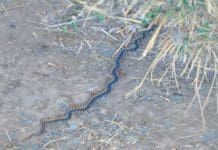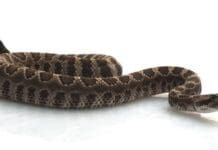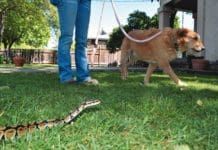Letters and Corrections: June 2015
In the May issue, we published an article, Outfoxing Foxtails
Lifting Your Dog
1.Place both hands briefly, gently, on either side of your dog's spine, and then feed him a treat.2.Gradually move your hand down and under your dog's ribcage on the far side, touching and feeding him a treat several times at each step.3.Gradually move your other hand around the front of your dog's chest to his opposite shoulder, touching and feeding him several times at each step.4.Put light pressure on your dog with both hands, gradually hugging him toward you, and then feed him a treat.5.Gradually increase pressure, feeding him treats several times at each step.6.Hug your dog against your chest, lifting upward slightly; release and treat.7.Gradually increase the amount of lift pressure until you are picking him up, giving him a treat several times at each step.
How to Put a Harness on a Dog(Jacket, Thundershirt, etc.)
Some behaviors don't lend themselves well to a total choice approach, but you may be able to use a Choice/Conditioning-hybrid procedure, still giving your...
Cleaning Dog Feet: Training Your Dog to Accept Cleaning
For all classical conditioning procedures, do multiple repetitions of each step, feeding your dog a high-value treat (I like to use bits of fresh roasted or canned chicken) after each repetition. Only move to the next step when your dog becomes clearly happy at the previous step; this lets you know he's made the association between the procedure and the high-value treat.
How to Train Your Dog to Accept Husbandry Chores
I put my hands on my dogs at least a few dozen times a day. It might be to attach or untangle a leash, look into ears, check teeth, brush or trim fur in various places, put on a Thundershirt, apply flea and tick preventative, or just to feel the soft silky warmth of dog under my hand. We humans are a tactile species, and with our handy opposable thumbs, we're always doing something to manipulate our canine companions and their body parts.
Trimming a Dog’s Toenails
Even behaviors that don't lend themselves well to choice, such as trimming hair and medicating ears, can incorporate an element of choice and priming, by teaching your dog to station." To "go to station" means to to go to a specific spot where nine times out of 10 (or better yet
Why Are The Effects Of Snake Venom So Varied?
Snake venom consists of proteins, enzymes, substances with a cytotoxic (poisonous to living cells) effect, neurotoxins (which damage nerve cells), and anti-coagulants. Four distinct types of venom act on the body differently.
A Snake-Bite Survival Story
On October 25, 2013, three days before his dog's fifth birthday, Dan Owen of Helena, Montana, went pheasant hunting with his friend Doug Denler in Shonkin, Montana, 40 miles east of Great Falls. Owen's Golden Retriever, Dusty, and Denler's Brittany Spaniel, Radar, were experienced hunters.It's really desolate looking country
Are You Sure It Was A Rattlesnake?
Snakes and dogs are a bad combination in any circumstances, but it's helpful to know what venomous snakes look like, both where you live and where you might be traveling.
Appreciating Rattlesnakes
Rattlesnakes fill most of us with fear and anxiety. For many, the only good snake is a dead snake.
How to Prevent or Treat Bites from Poisonous Snakes
Thousands of dogs are bitten in the U.S. each year by venomous snakes. Ninety-nine percent of the snakes that bite them are pit vipers, whose Crotalidae family includes Copperheads, Cottonmouths (Water Moccasins), and more than a dozen species of rattlesnake. The remaining one percent are Coral snakes, native to the American Southeast and Mexican border.
Snake Avoidance Training for Dogs
Positive training methods focus on rewarding activities, and they're fun for dogs and handlers. But mention rattlesnakes and many dog owners worry that positive reinforcement isn't enough. In order to remain safe around rattlesnakes, some say, your dog may need aversion training with an electronic (shock) collar.












